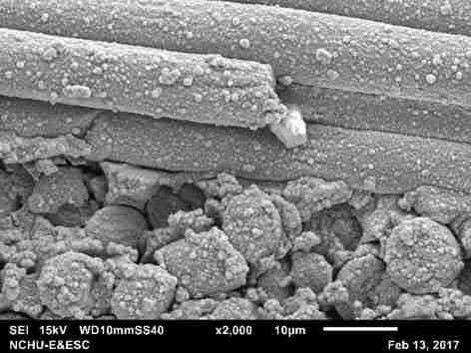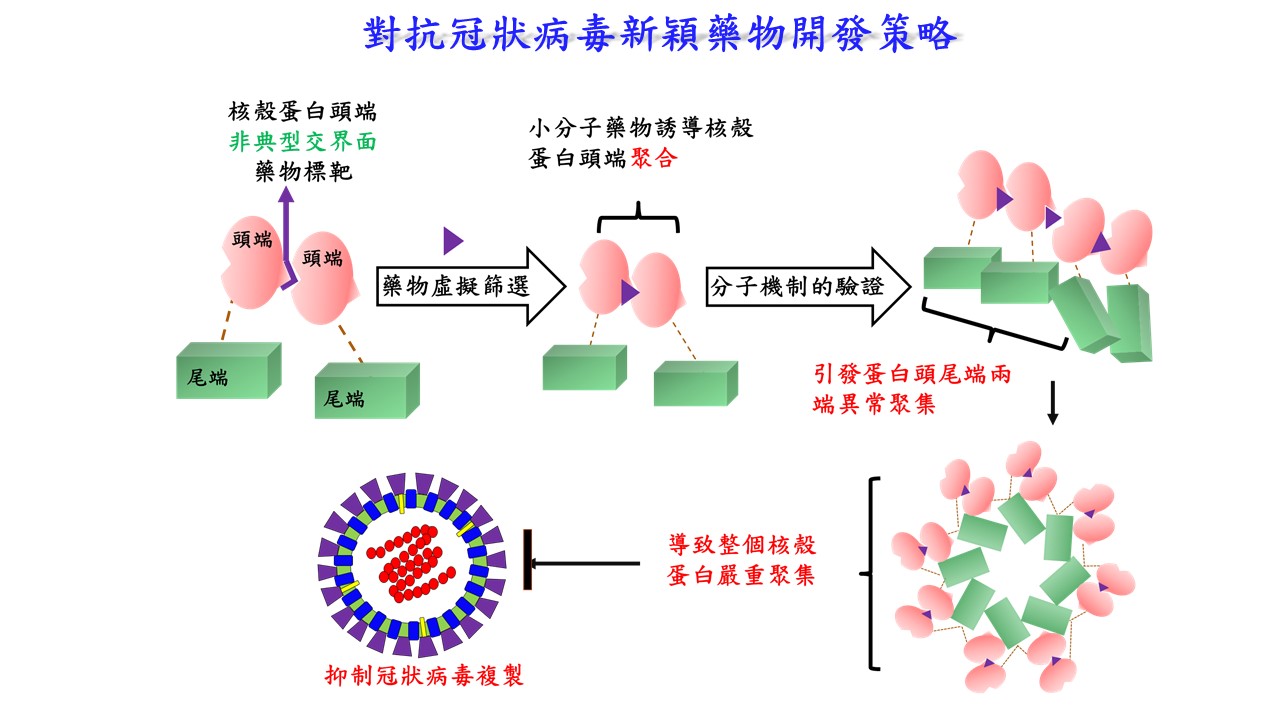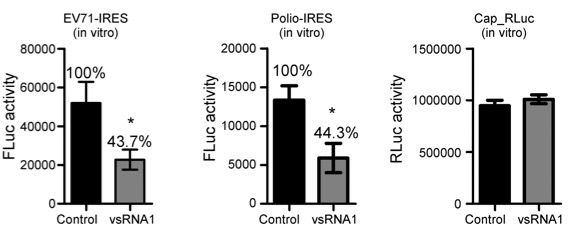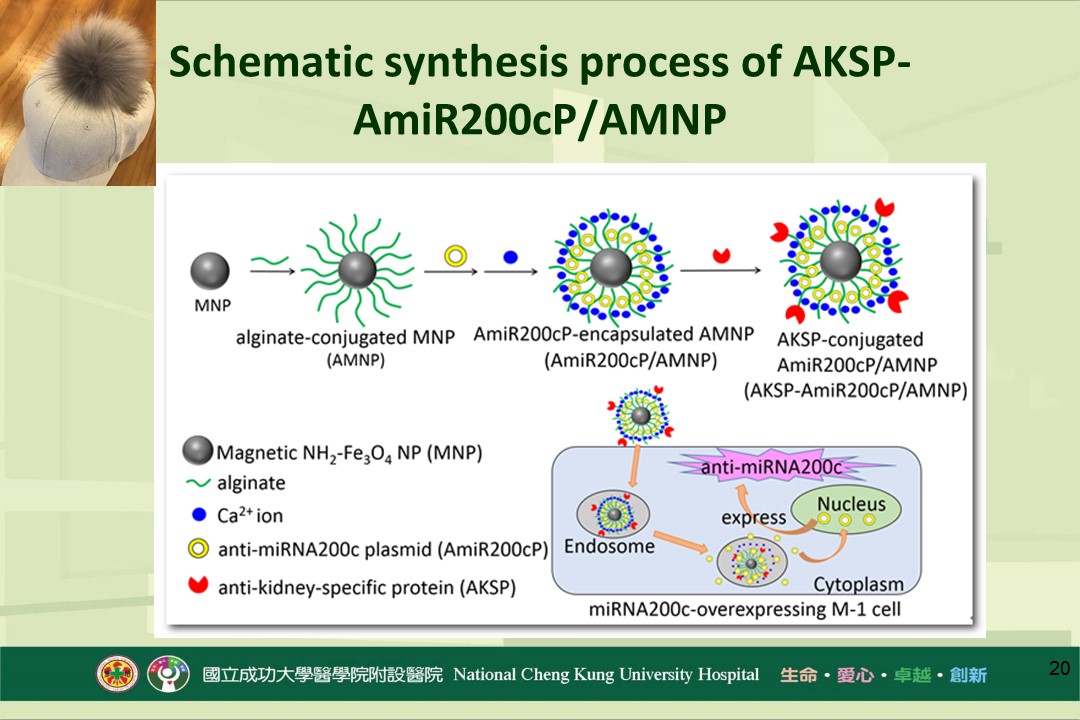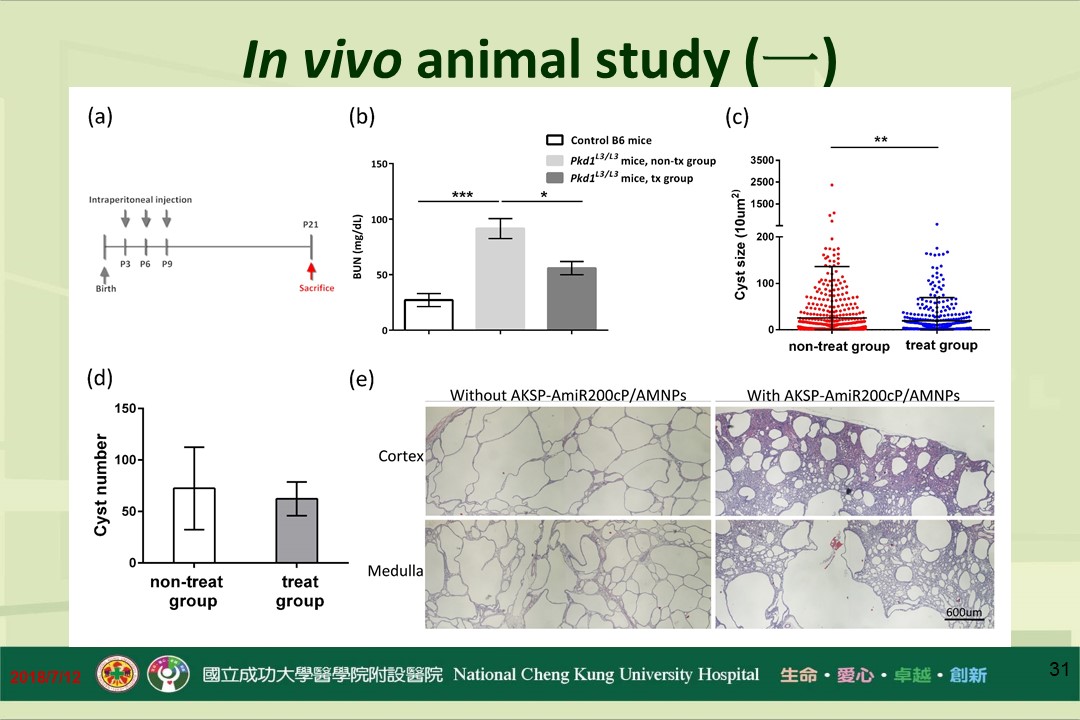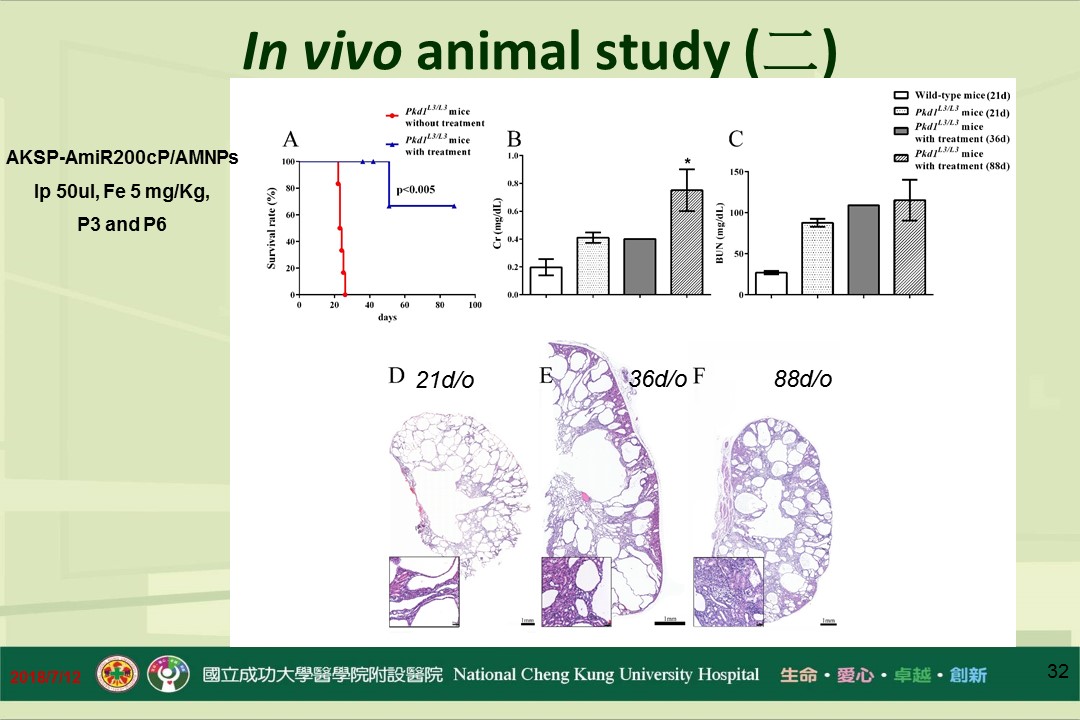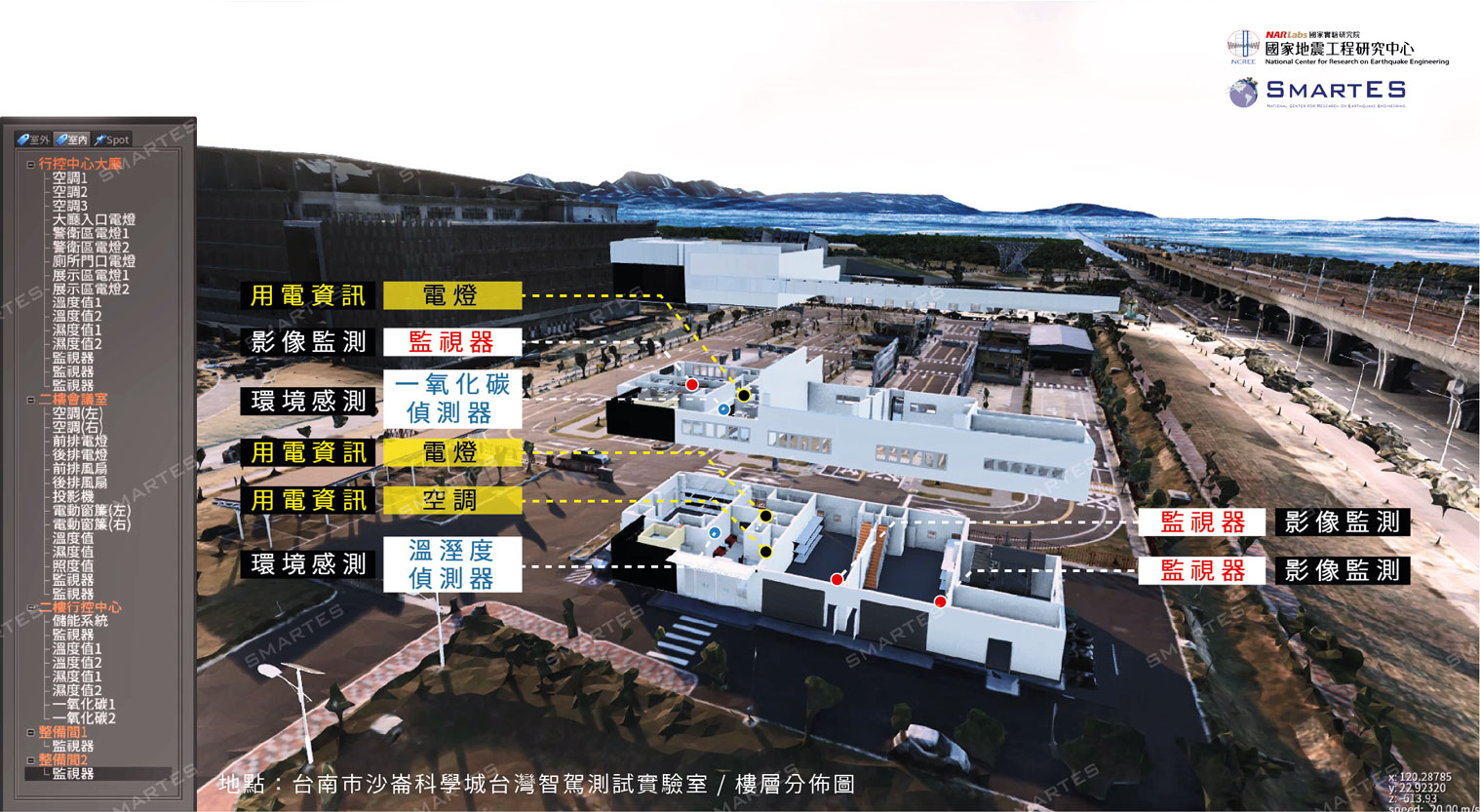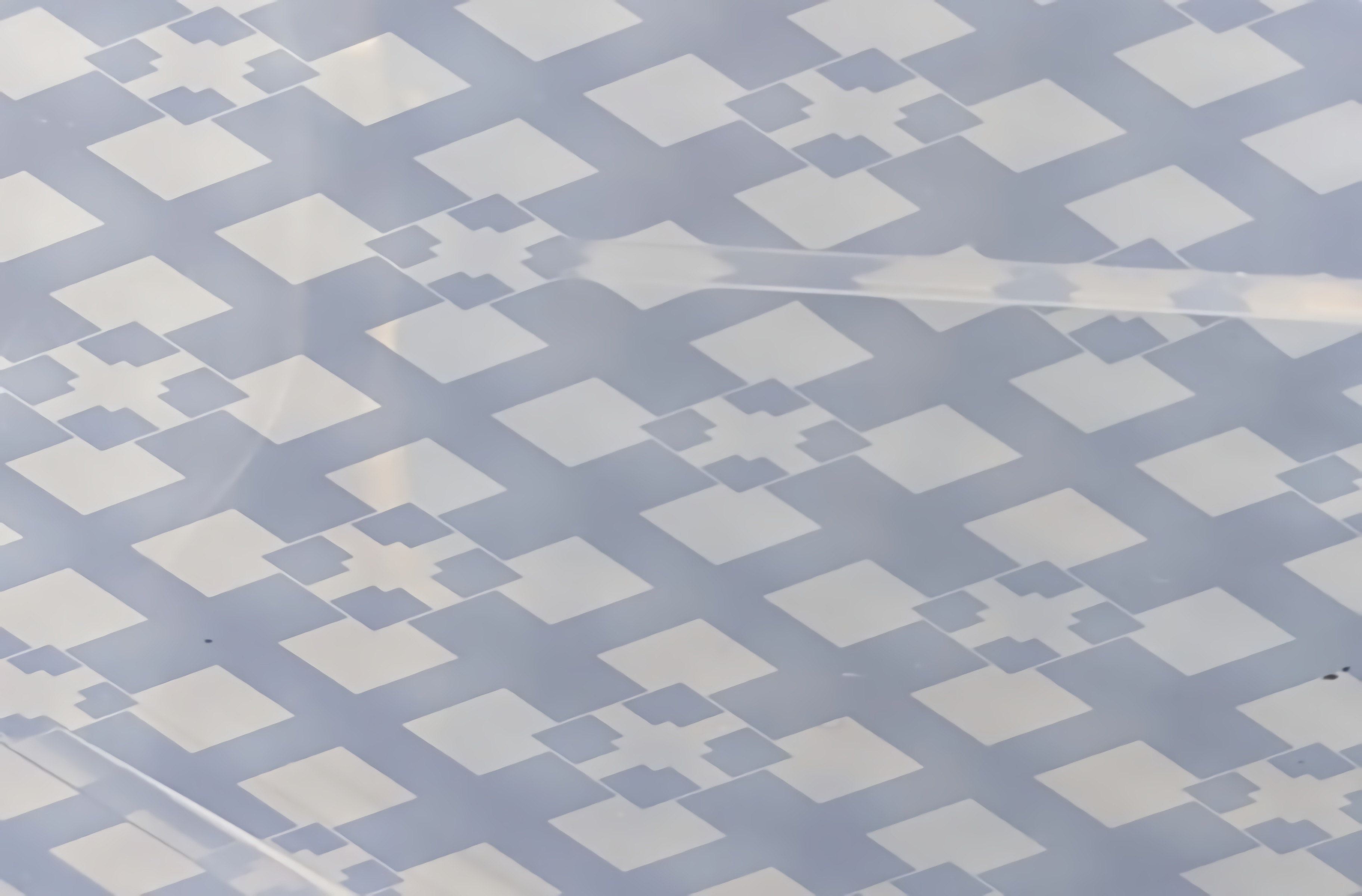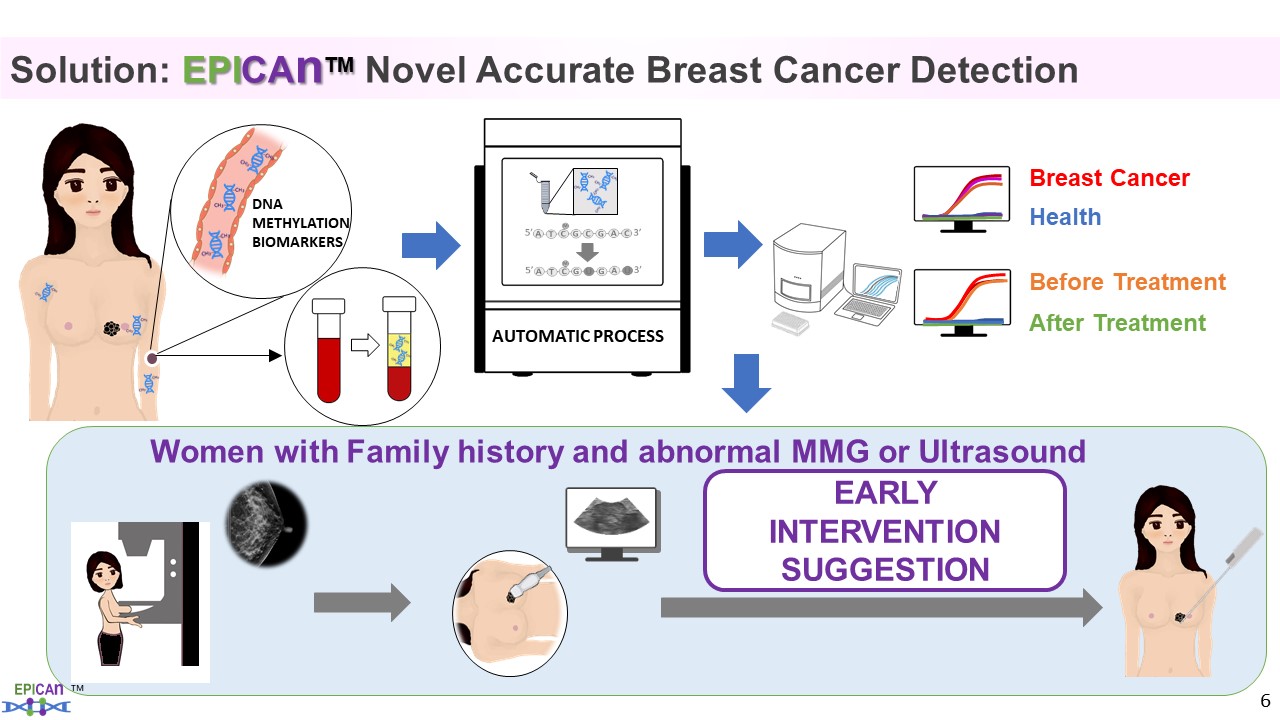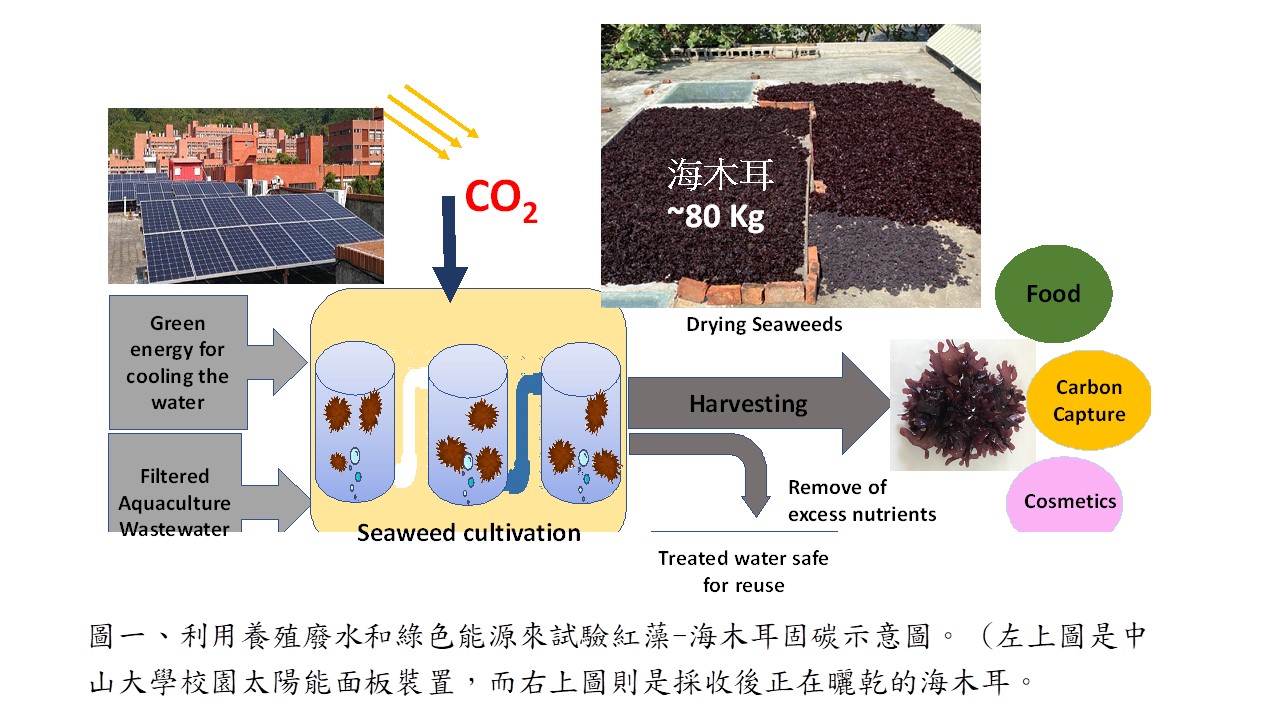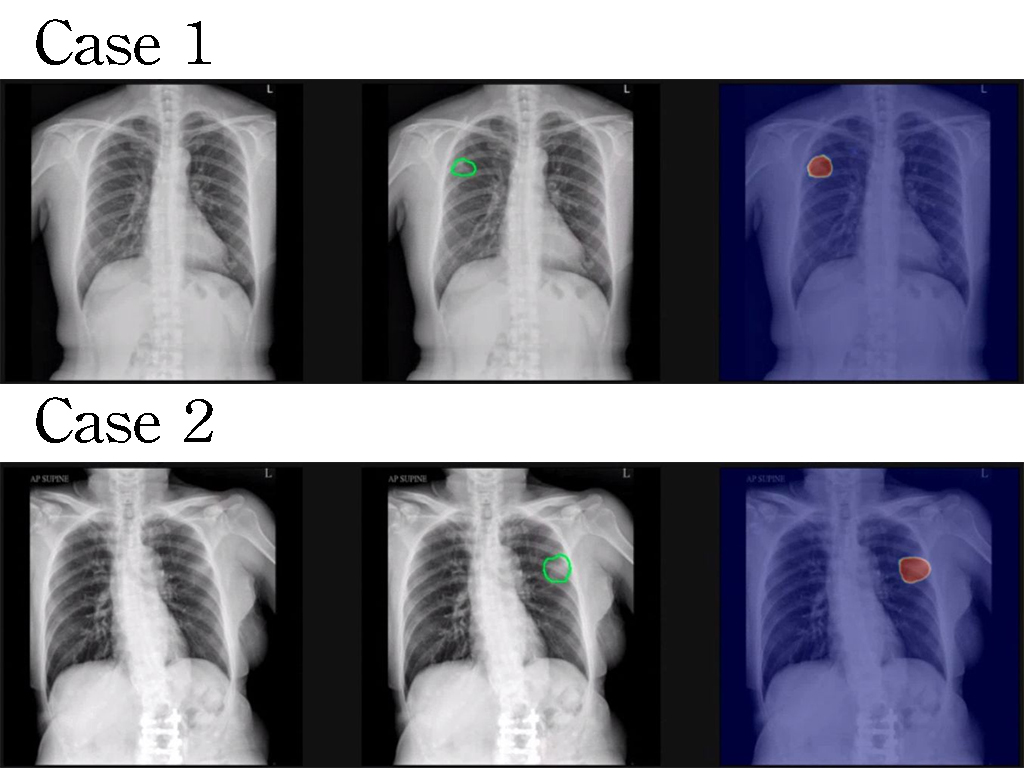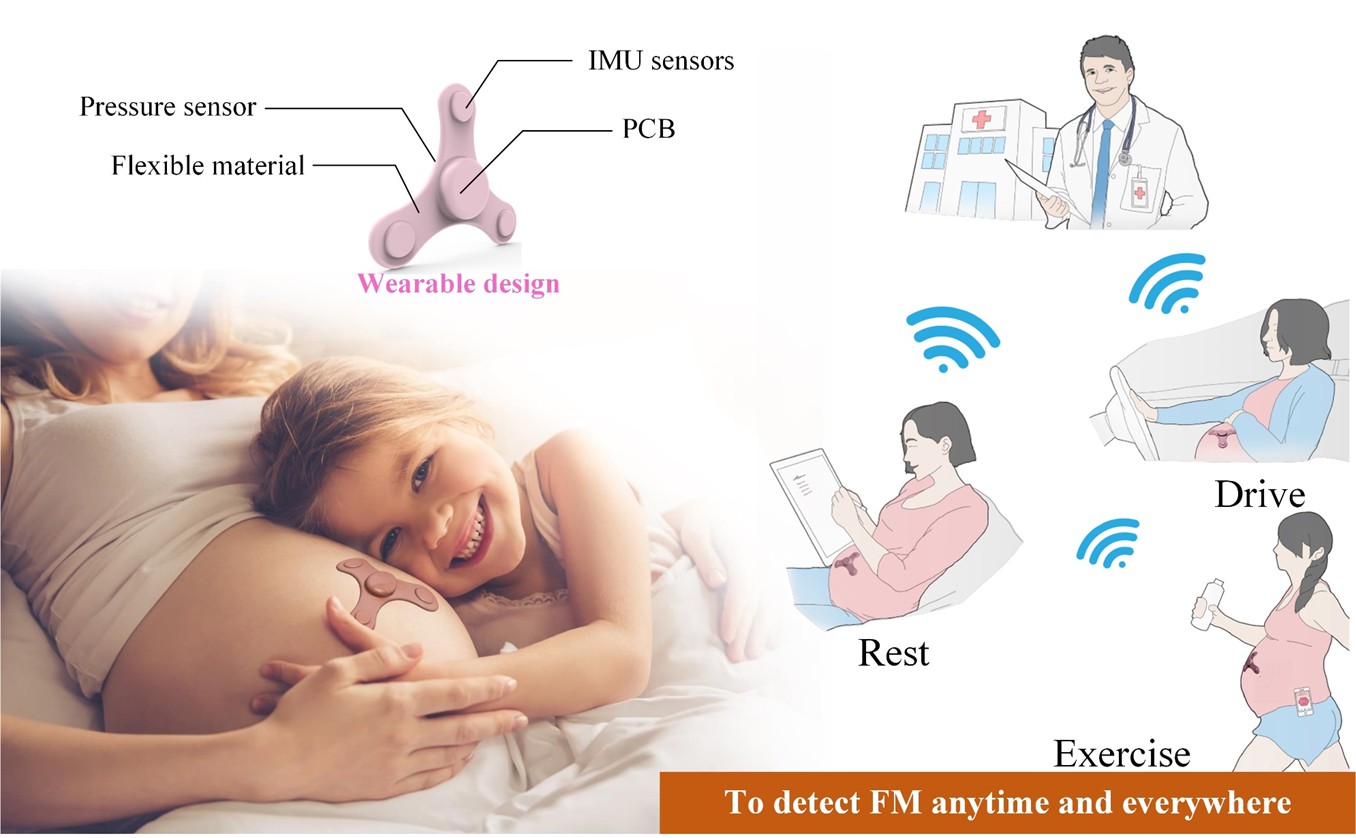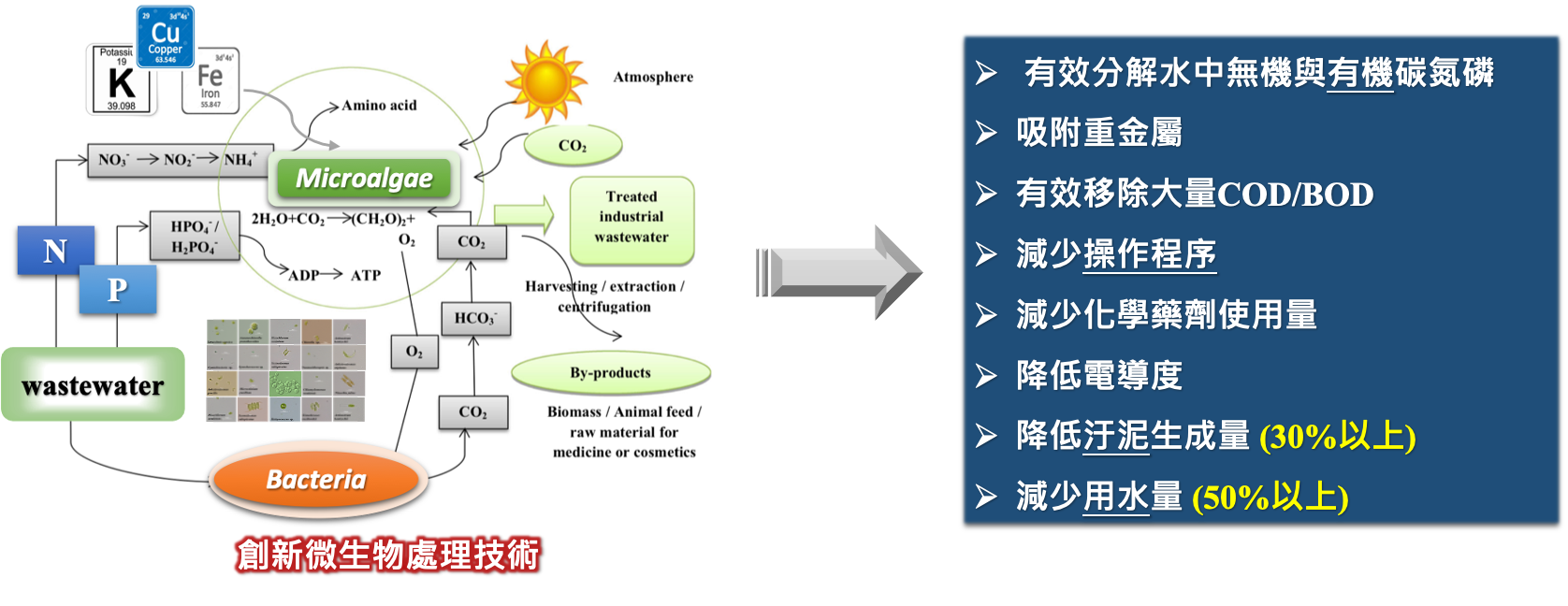| Technical Name |
Integrate site-specific target therapy of both nanoparticleanti-miRNA strategy to treat autosomal dominant polycystic kidney disease |
| Project Operator |
National Cheng-Kung University |
| Project Host |
邱元佑 |
| Summary |
The specific miRNA can bind to 3' non-coding region of PKD-1 gene, leading to kidney cell proliferationcyst formation, relates to IGF-1 signal pathway. We adhered anti-kidney specific protein with Fe3O4 nanoparticles to pack anti-miRNA plasmid. It can prevent the degradation of miRNAincrease the concentration of polycystin 1 in tissue to inhibit cell proliferationcyst formation. |
| Scientific Breakthrough |
Anti-miRNA has been proved feasible to treat congenital developmental disease. This modified nanoparticle, encapsulated with anti-miRNA plastidsbound with target tissue protein Ab to avoid degradation, can improve the specificity of the anti-miRNA plastid in kidney. Finally, the concentration of anti-miRNA in renal tubule cells will increase significantly as the purpose of precise medicine.
|
| Industrial Applicability |
(1) Incidence of ADPKD is 1/400-1/1000, near 15 million patients in world (2) With the increase of age, patients will enter uremia after 50 years oldreceive dialysis (3) Patients with ADPKD, the cost of health care is higher than non-ADPKD patients (4) If contains comorbidities (ex. cardiovascular disease)the loss of productivity, it is very significant (5) No satisfactory treatment.
|
| Keyword |
|


